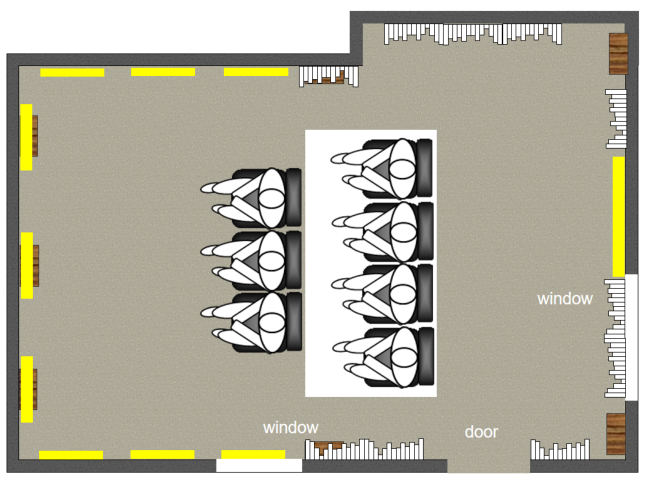My discussion of acoustical treatments for home theater and media rooms now continues with a discussion of the most exotic of the treatments: diffusion. We’ll discuss the concept and how it can be implemented in a home listening room. In the previous article we discussed acoustical absorption.
Here’s our definitions for treatment types:
Absorption: Absorbing sound impacting the panel. It reduces or removes the energy of a reflection.
Diffusion: Diffusive panels scatter sound. While they are not generally designed to reduce the energy in sound they effectively reduce the energy in a reflection by dividing it into many reflections to various directions.
Reflection: Yes, reflection is an important element in room design. Many reflections are beneficial and should be preserved.
Bass traps: This category includes everything from very thick panels to diaphragmatic absorbers. The commonality is that they are most effective absorbing low frequencies.
Hybrid Treatments: These types combine the functions of the above types. They can be very useful when some frequencies should be absorbed while others reflected or scattered.
A Diffusive Space

Diffusion is a word that seems to define itself, however the utility of such treatments seems poorly defined by manufacturers and designers. I’ve seen diffusers used almost everywhere in a room without much explanation as to why. Allow me to reference one of the qualities of a large room we discussed in my article on absorption. Large rooms (concert halls, auditoriums, etc.) are referred to as having a diffusive sound field; as in a free space or field. Free, meaning open without narrow boundaries or obstructions. Ultimately, it is the diffusiveness of large rooms that are one of their great sonic benefits. It therefore seems logical that we’d like to make our small rooms more diffusive.
In a large room, the diffusiveness is a natural occurrence of having a wide-open area for sound waves to travel. As they travel the long distances between walls there is a homogenization of the various reflections; that is, they begin to become less different as they originate at many angles from the listeners. That’s why we can measure the reverberation time (RT60) of a large room and find nearly the same reading everywhere. Diffusers are used in large rooms to perfect the diffusive condition of a space, especially in rooms where there are unusual surfaces or if the shape of the room is not completely open. Diffusion in a small space like a home theater is more local. I mean that the early reflections tend to dominate the sound quality and the origin of these reflections is highly localized. Moving furniture or a speaker can greatly change the origin point of a reflection or even block it. The problem becomes less about absorbing those reflections and more of filling in the gaps between them or better put, spreading sonic energy more evenly.
When we add diffusion, we are, in fact, filling in the gaps where direct reflections or speakers are absent. We can add absorption to tame some early reflections to improve the focus of the sound field. This can provide some benefit; however, the early reflections are also the genesis of later reflections. Early reflections eventually become later reflections with origins at other locations. In effect, by over-absorbing we are reducing the diffusiveness of the space by killing the late reflections as we kill the early ones. That’s why we are careful when adding absorption in limited quantities where it can be helpful. Good locations for absorption are the side walls (in limited quantities), behind floor-standing speakers, and often in the center of the back of the room. Often we’ll put a distributed pattern of absorption or hybrid treatments on the side walls to manage them yet not kill them. We need much of the energy from the early reflections to survive and become later reflections to enhance a sense of diffusion. We call the uniformity of the sound field “envelopment”. Obviously, in a home theater the surround speakers play a role in the envelopment of the system as well but that’s for another discussion.

Scattering Sound
The basic mechanics of a diffuser are straightforward; an uneven surface that breaks up a reflection into many smaller reflections deflected at various angles. There are many diffusers on the market. Most are simply elaborate surfaces designed to please the designer. Others are very scientifically designed surfaces which provide a very uniform scattering of the sound. The qualification of the scattering characteristics of a surface is called the scattering coefficient (SC). It is defined as one minus the ratio between the specularly reflected acoustic energy and the total reflected acoustic energy. In other words, it shows how much energy is scattered from a reflection due to the uneven surface. The higher the number the more energy is scattered. Unfortunately, this doesn’t help us much. We can assume that the higher the scattering coefficient is, the more it is diffused. The real utility in the SC is with acousticians plugging in numbers to a computer model to predict how a large space will behave acoustically. As with the acoustic absorption coefficient, we don’t really have any computer models that do a good job in a small room. In addition, this tells us little about the uniformity of the scattering. For that we need to look at the diffusion coefficient.
The diffusion coefficient is also a number between 0 and 1. A higher number means the surface scatters the sound more uniformly in many directions. Diffusive materials differ in how they scatter sound. Some scatter sound in a way that favors certain angles and not others. Such a treatment could be considered a poor diffusor since the sound is not scattered uniformly. The concept of a diffusion coefficient was pioneered by Dr Peter D’Antonio of RPG Diffusor Systems Inc. and Dr Trevor Cox of the University of Salford. The key to a quality diffuser is not just how well it scatters sound but also that it does so uniformly in many directions. Many, if not most of the cheap diffusers on the market do not reveal these coefficients.
Placement

So, where do we place our diffusers? I’ll bow to the opinions of various acousticians out there by once again pointing out they seem to appear everywhere in some home theater designs. That’s not a bad thing. After all, we are seeking a more diffusive room. HAA recommends the best location for diffusors is in the rear half of the home theater, particularly between the surround and rear speakers. The audible effect is one of adding spaciousness to the sound. In addition, properly placed diffusors can reduce the localization of the surround and rear speakers; reduce the “exit door effect”. One location I do not like to used too much diffusion is on the side walls at the LCR reflections (mirror) points. While good diffusers do not reduce sonic energy (at least not much), they can reduce the energy of good reflections that we want. If I use diffusion on the LCR mirror points, I’ll still want plenty of the “good” reflections to be retained; just as I do when adding absorption there.
I’m running long again. Stay tuned on the HAA Portal for more about acoustical treatment.

nice
After treating the reflection points for all speakers appropriately in a high-performance room, there are most often still untrated reflective areas in the room.
Would adding diffusion to such areas be an improvement (although probably not significant) or would it actually decrease performance in the rooms?
好的扩散材料如果能够和装修美学融为一体,将会是令更多人喜欢和接受的事情。